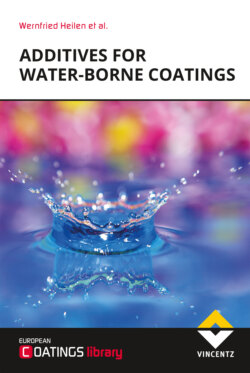Читать книгу Additives for Waterborne Coatings - et al. - Страница 58
На сайте Литреса книга снята с продажи.
3.2.2.3Bridging mechanism
ОглавлениеThe bridging mechanism requires that a defoamer droplet can pass the entry barrier and that it has a positive entry coefficient. Bridging occurs when a defoamer droplet penetrates on both sides of a lamella.
Figure 3.4: Bridging of a foam lamella
The behaviour of a defoamer droplet in the lamella is determined by the bridging coefficient B. Only defoamers with a positive bridging coefficient are able to destabilise the foam lamella by subsequent defoaming mechanisms. If the bridging coefficient is negative, the oil remains as a stable bridge in the lamella.
B = σ AW 2 + σ OW 2 – σ OA 2
The value of the bridging coefficient is determined by the contact angles between the three phases, oil, liquid and air, and thus by the geometry of the droplet and the thickness of the lamella.
Figure 3.5: a) A contact angle α W lower than 90° results in a negative bridging coefficient, b) A contact angle α W higher than 90° results in a positive bridging coefficient.
If changes in the thickness of the lamella occur due to drainage, the absolute value of the bridging coefficient may change. The bridging defoamer drop may also grow by picking up spread-out oil. In both cases this may cause the bridging coefficient to change from negative to positive values, thus converting a stable bridge into an unstable bridge. A positive bridging coefficient is a prerequisite for the subsequent bridging-stretching or bridging-de-wetting mechanisms [6] [8].
